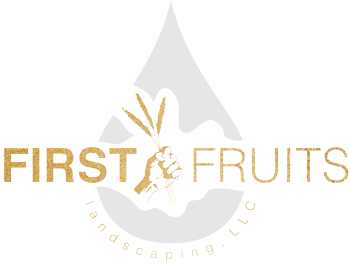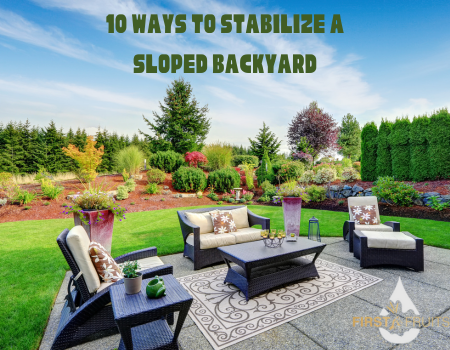Sloped backyards are often seen as a menace, or an unsightly and difficult space to landscape, however, with the right landscaping company, a vision, and the right plan, sloped backyards can be a beautiful addition to your outdoor space. While there are many different features you can incorporate into the space, one of the first steps when landscaping a sloped backyard correctly, it to determine the base layer, whether this be mulch, built in stairs, etc. when landscaping a slope, you want to work from the ground up, adding details and plants last.
Landscaping a Sloped Backyard
- Mulch Magic: Mulch serves as a simple yet effective solution for stabilizing gently sloped yards. Not only does it help prevent the loss of topsoil, but it also suppresses weeds and retains moisture, creating an ideal environment for plant growth.
- Landscape Fabric Barrier: For gentle to moderate slopes, landscape fabric provides excellent stabilization by preventing soil erosion. While it may break down over time, it offers a temporary solution and supports root development while keeping the soil intact.
- Rock and Boulder Formation: Strategically placing rocks and boulders along the slope can help prevent soil erosion. Angular boulders are preferable for steeper grades as they can dig into the soil, providing stability against erosion.
- Berm Brilliance: Creating soil or wooden berms offers a gentle transition between different levels in your yard. This natural approach not only stabilizes the slope but also adds visual interest to the landscape.
- Rock Walls: Rock walls, constructed by stacking loose or adhered rocks, serve both functional and aesthetic purposes. They stabilize the soil, define different areas, and add character to your backyard landscape.
- Retaining Walls: Ideal for steep slopes, retaining walls help stabilize the soil by holding back earth and defining distinct areas in your yard. They can be constructed using various materials such as rocks, bricks, or timber, depending on your aesthetic preferences and budget.
- Terracing: Dividing a steep hillside into terraced levels with retaining walls creates flat surfaces that control runoff and provide opportunities for planting and recreation. Terracing adds dimension to your yard while effectively stabilizing the slope.
- Stairways and Pathways: Installing stairways and pathways not only enhances accessibility but also aids in slope stabilization. Whether crafted from stone, wood, or gravel, these features create safe passages and visually appealing transitions between different areas of your yard.
- Waterfalls: Capitalizing on elevation changes, a cascading waterfall not only adds beauty but also helps stabilize the hillside. By carefully selecting materials and incorporating proper drainage, you can create a stunning focal point while addressing slope stabilization needs.
- Strategic Vegetation: Turf grass and other plants play a crucial role in anchoring slopes and preventing erosion. Choose vegetation that is suitable for your climate and soil conditions, ensuring that it effectively stabilizes the slope while adding greenery to your landscape.
While landscaping a sloped backyard may require careful planning and consideration, if you have a well-thought-out plan on how to stabilize the area, the sky is the limit when it comes to your landscape. Sloped backyards don’t have to ruin your outdoor space, in fact, with the right vision and care, sloped backyards can provide a captivating outdoor oasis that is both visually stunning and functional for years to come. Are you ready to transform your sloped backyard into an outdoor space you’ll love? Contact our team of full-service landscapers today!

